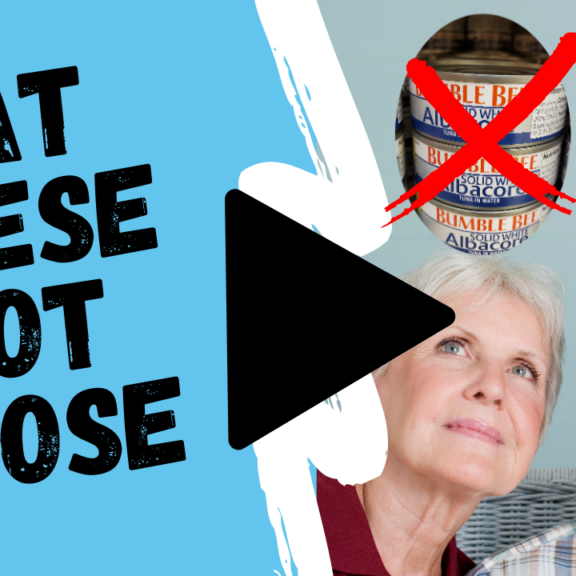How to eat healthy . . . without going broke
One common complaint we often hear is how eating healthier costs more.
Ok, we’re not gonna sugar coat it. Switching to a more whole foods, nutrient rich diet most likely will increase your food bill, unless you are spending lots of money ordering take out or dining out most nights.
HOWEVER, that being said, it IS possible to eat healthfully on a reasonable budget (we promise)!
We should know. We are sticklers for choosing wholesome, nutrient-dense, and mostly organic foods and are always on the lookout for the best deals for our families and our clients.
So take our advice and check out our favorite budget tips, which prove that you don’t have to shop at expensive health food stores to reap the benefits of a nourishing diet.
1. Buy in bulk
- Buy large portions, divide into individual servings, and freeze. This works well for lean meats and poultry.
- Buy in bulk at chains like Sam’s Club or Costco (Stephanie’s post on her favorite Costco finds is a must read)! You can often find organic produce, nuts/seeds and even meats and poultry for better prices than the supermarket.
- Many health food stores/coops have bulk sections where you can purchase rice, beans, oatmeal, nuts, and other grains for much less than prepackaged products.
- When available, buy bags of fruit instead of individual pieces by the pound.
2. Cook and store in bulk
- Make dishes on the weekends that you can eat during the week, or freeze and use at a later date. A big bowl of bean soup or chili can be dinner as well as lunch for the next day or two. This saves on expensive frozen dinners or take-out food, trips to the cafeteria, and last-minute detours to the drive-through window.
3. Manage the meat
- Look for lean meat, poultry and fish on sale, and freeze for later use.
- Chicken thighs are more of a bargain and work wonders in almost any chicken recipe that calls for breasts.
- Organic ground meats are the least expensive forms (vs steaks or chops) and can be used for tacos, meat sauce, burgers, etc.
- Trade lean meats for other protein sources sometimes. Beans and organic, pastured eggs are excellent protein choices and good alternatives to pricier animal protein.
4. Be season and organic savvy
- Seasonal fruits and vegetables taste best and are often much less pricey than imported out-of-season varieties.
- Look for reduced produce in the supermarket. It is usually only a day or two old, but much less expensive.
- Visit local farmers and ethnic markets, where produce is often cheap and fresh.
- Speak to local farmers about their pesitcide use, many farmers practice organic farming, but do not get organic certification due to cost.
- Get familiar with the Environmental Working Group’s Clean 15. These are produce items that are least likely to hold onto pesticide residue and don’t necessarily need to be organic.
5. Look for deals on the internet
- You can often find great deals for items such as coconut oil, olive oil, almond butter or nuts online. Buy in bulk and share with a neighbor or friend.
- Check out VITACOST for great deals and coupons.
6. Convenience counts
- If you find your produce often goes bad, try frozen options. Look for products packed in their own juice, or made without salt or sugar.
- Frozen fruit works wonders in smoothies.
7. Plan ahead
- Menu planning will help you reduce any waste of produce and other fresh foods.
- Make a list – research shows that shoppers without a list tend to buy more food, especially of the snacking variety!
8. Don’t go to the store hungry
- Being hungry will weaken your resolve. You’ll be more tempted to indulge in items that are unhealthy and more costly.
9. Limit junk food
- The cost of ice cream, chips, cookies and prepared frozen foods can add up to be the most expensive things in your cart.
- Trade the money you spend on junk for fresh avocados, luscious grape tomatoes, and crunchy apples. All are delicious and totally natural.
10. Join a CSA (community supported agriculture ) program
- Save by buying direct and cutting out the middleman. This link has great resources.
- Many will deliver to your house for reasonable prices, or have a convenient pick-up location.
Finally, we remind clients of this very important fact: Fueling your body with nutritious foods will undoubtedly lead to fewer medical bills and prescriptions. A healthy body is the best bargain of all.
Looking for more info on how to make simple, savvy changes to your diet? A great place to start is by following the guidelines in our PM Meal Mastery™ program. For less than the cost of a bag of groceries, you can have access to this amazing resource that provides a scientifically-backed nutrition plan for optimal health, energy, and confidence after menopause.

THE NOURISHING GURUS
Jane and Stephanie, creators of The Simply Nourished Solution™, are nutritionists who help women over 50 go from overweight, frustrated, and inflamed to lighter and healthier so they can be more active, feel good in their bodies, and live the second half of life with energy and confidence. Their 3-pronged approach, which can fit into any lifestyle, encompasses not only wholesome energizing foods but powerful habit and mindset shifts.
CATEGORIES
What’s blocking your weight loss success?

You can still lose weight after 50 - even if you’ve been trying your whole life! Find out what’s standing between you and the healthy weight, energy and freedom you’re looking for.
Supported weight loss for women over 50
If you’re struggling to nourish yourself after menopause, our Simply Nourished Solution™ Signature Weight Loss Program offers the tools, strategies and shifts you need to stop yo-yo dieting, permanently lose weight, and feel better than ever in your 50’s, 60’s and beyond.


